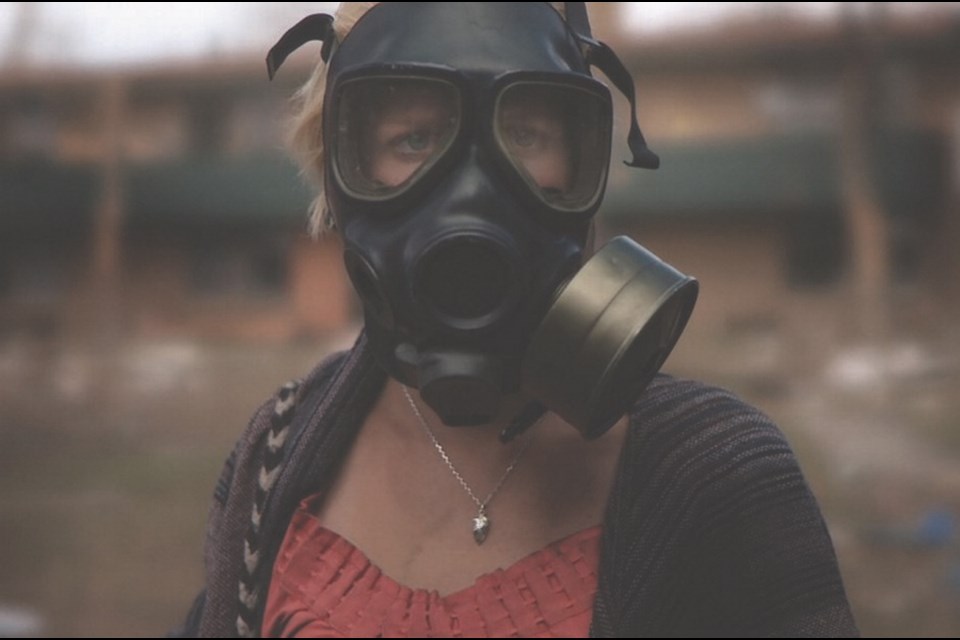When Gareth Edwards takes the stage at Vic Theatre this afternoon, he’ll have some simple advice for budding filmmakers.
The British filmmaker says he will likely advise them to “go make a movie,” he said. His 3 p.m. talk is part of Springboard, the annual series of industry seminars held in tandem with the 10-day Victoria Film Festival that begins today.
“It doesn’t cost anything these days to make a low-budget film that looks pretty good.”
Edwards, 37, should know. The BAFTA Award-winning visual-effects whiz caught Hollywood’s attention after his promising 2010 feature debut Monsters won critical acclaim, including references to him as “the next James Cameron.”
The writer-director’s fresh take on alien-invasion films, made for just $15,000, centres on a cynical American photojournalist who reluctantly escorts the publisher’s daughter through the “infected zone” between the U.S. and Mexico where aliens have been quarantined since a NASA probe carrying the beasts exploded upon re-entry.
These slithering, tentacled illegal immigrants, mostly seen in glimpses, have since been monitored by U.S. military forces in this danger zone, where hovering helicopters are obvious as metaphors on terrorism and xenophobia.
The toughest challenge was trying to design extraterrestrial beasts “that felt scary and beautiful,” recalls the CGI animator, a fan of Ridley Scott’s humanoid creatures with insect-like aspects in Alien.
“I spent months and months doodling images, and I guess you could say, in the end I just went with a giant octopus,” he says. “Nature has had billions of years to design creatures, and I had two months, so I think a bit of plagiarism is acceptable.”
The do-it-yourself yarn, shot in Mexico in three weeks with a five-person crew using off-the-shelf equipment and featuring creative computer-generated effects, has paid off. The movie magician has since been hired to direct the Godzilla reboot co-produced by Legendary Pictures (The Dark Knight) and Warner Bros., and set to stomp into mutiplexes May 16, 2014.
The Nuneaton, U.K.-born filmmaker says it was while sharing his flat at film school with a computer-animation student when Jurassic Park was being released that he began to realize what a powerful filmmaking tool computer graphics was becoming.
“I thought I would graduate, show my short film to some producers and they would hire me to direct a movie,” recalled Edwards, whose graduation film was one of the first student films to combine live-action and digital effects.
“This obviously didn’t happen, but it felt like, if no one was ever going to give you the opportunity to make a film, then learning computer graphics could be the key to making something that looked like a Hollywood movie, from your bedroom.”
He isn’t joking when he says that’s where he began creating digital effects, kick-starting a career creating visual wonders that won him a BAFTA award and an Emmy nomination. He continued to push the boundaries of filmmaking, winning acclaim for Attila the Hun, the drama he directed for the BBC, creating all of its 250 visual effects himself.
Edwards has often said he wanted to become a filmmaker after seeing Star Wars: A New Hope (1977), which he claims to have watched every day for at least two years since he was about six.
“My mom remembers me quoting it word-for-word on long car journeys,” he recalled in an article he wrote for The Guardian. “I once did the entire script. They couldn’t work out whether I was a massive film fan or autistic.”
So Star Wars-obsessed was Edwards, he celebrated his 30th birthday by travelling with his girlfriend to Tunisia, where George Lucas’s sci-fi classic was filmed. They stayed at the Troglodyte Hotel in Matmata, which posed as Luke Skywalker’s home.
It was after Edwards entered SciFi London’s 48-hour filmmaking contest that he was able to prove you could make a “cinematic film” with no crew and only one actor in two days. He won first prize, and it inspired him to make Monsters.
He advises aspiring filmmakers to consider making even a short film, and not to worry about whether it’s “bad” or not.
“It’s best to get the bad one out of the way as soon as possible, so you can learn from it and do the good film next,” he says. “With digital technology, there’s no real reason to delay things these days.”
And, yes, he says — you really can create amazing visual effects from your bedroom.
“Even when you go to a massive visual-effects company, all it really comes down to is artists sitting on computers,” he says. “There’s no reason an artist can’t sit at his computer at home, opposed to at an office.”
The proliferation of accessible, easier-to-use technology is a mixed blessing, however.
“I’m glad I’m not at film school today because the competition is even more fierce,” Edwards says. “The amount of great work you see online, whether it’s a short film, concept art, animation — it’s way better than anything I could have ever done.”
The downside is while it’s much easier to create projects, “it’s much harder to stand out from the crowd.”
Although Edwards has graduated from being a crackerjack visual-effects artist “who always felt like a frustrated filmmaker” to a Hollywood moviemaker, he admits he still felt like a frustrated filmmaker while directing Monsters.
“I think it’s that frustration that drives you to do better work,” he said. “I’m never fully happy with anything I’ve done.”
